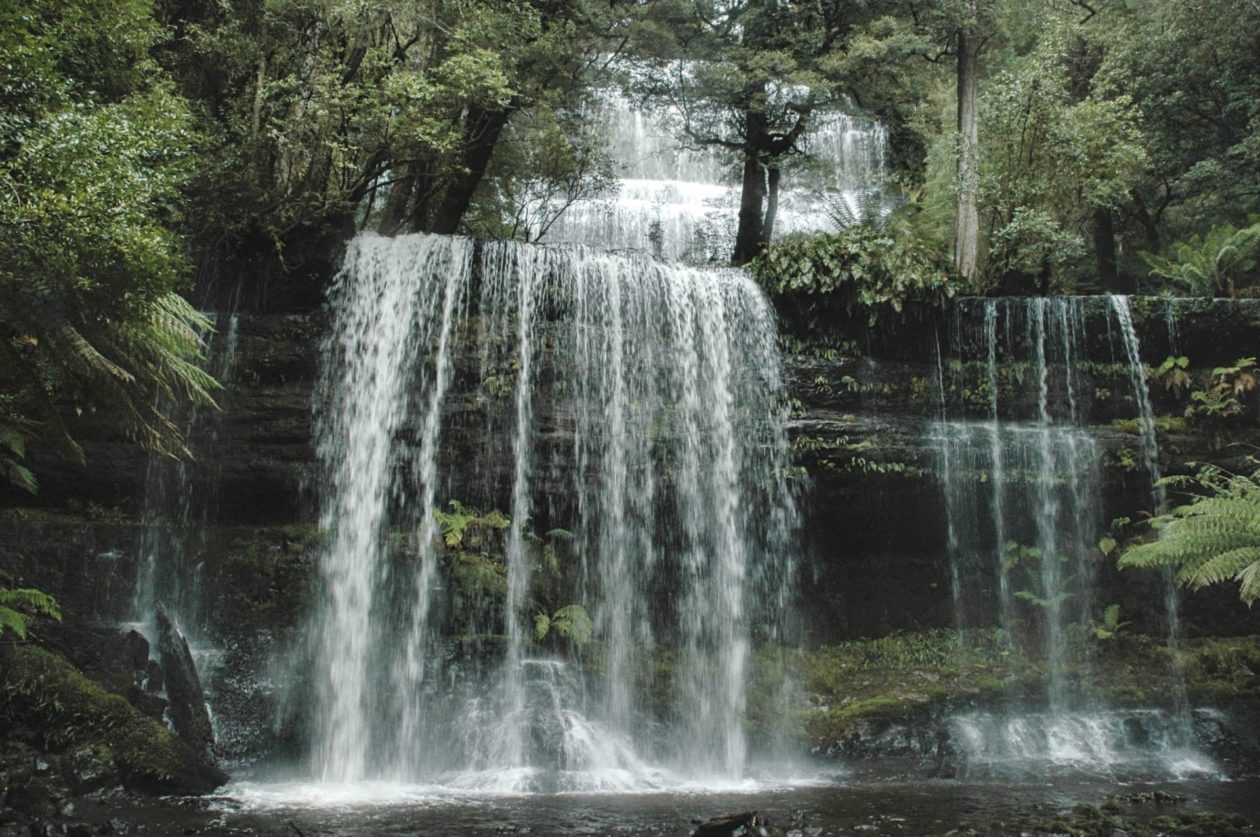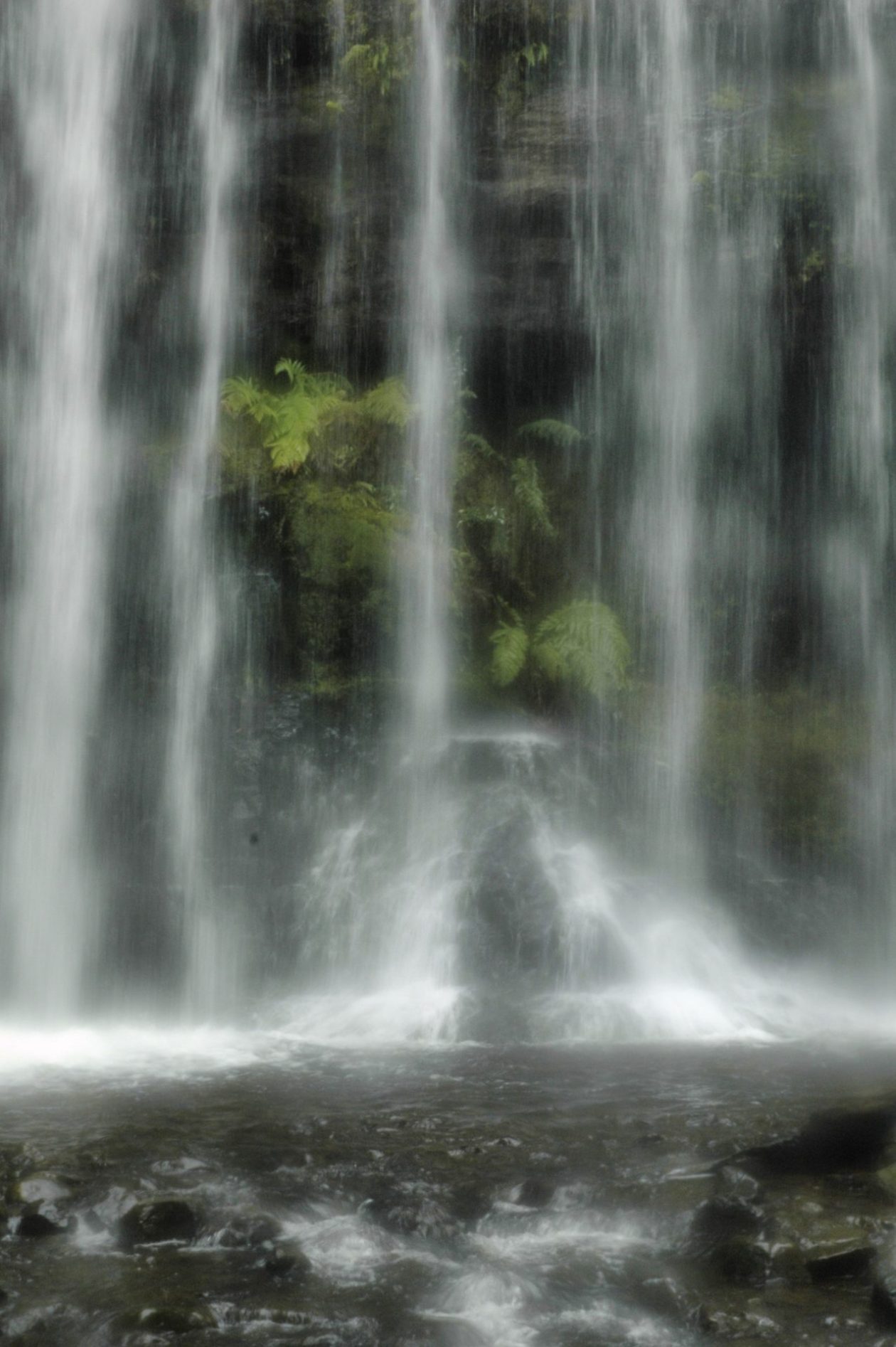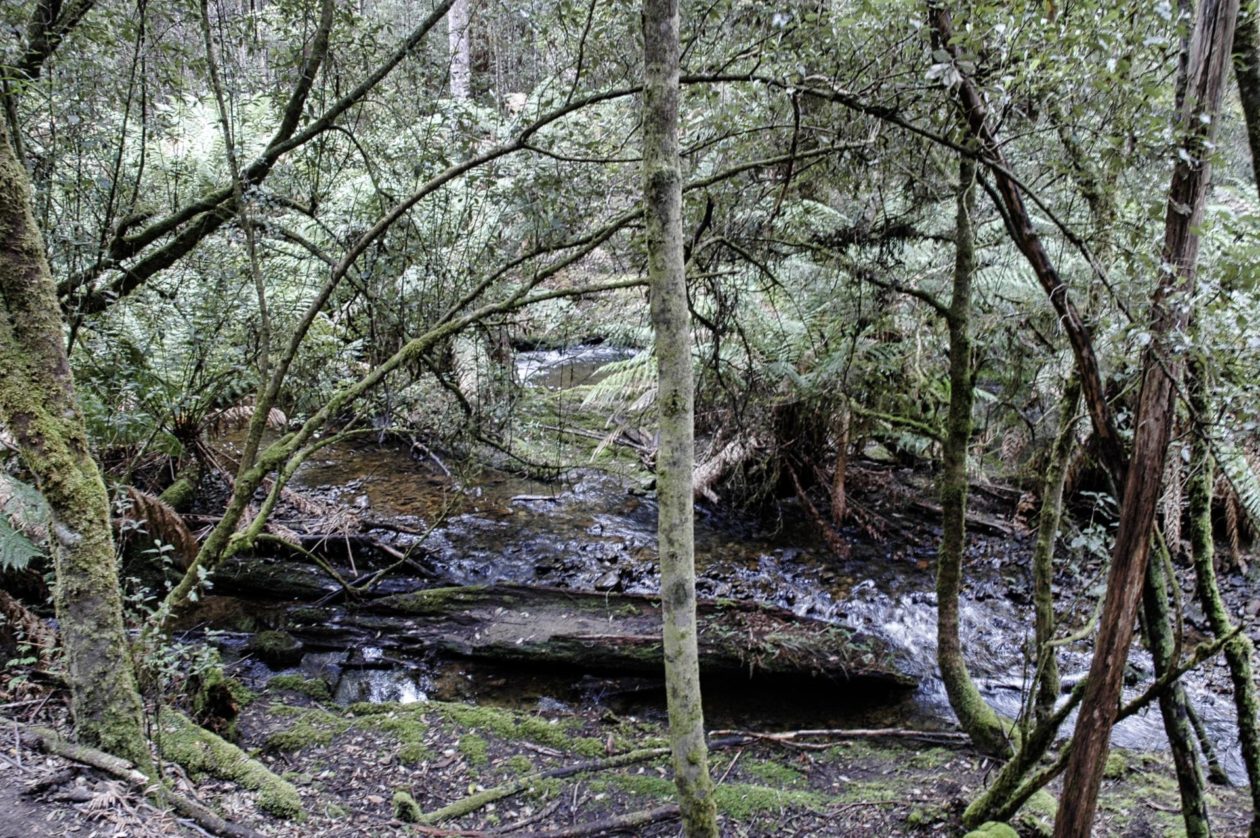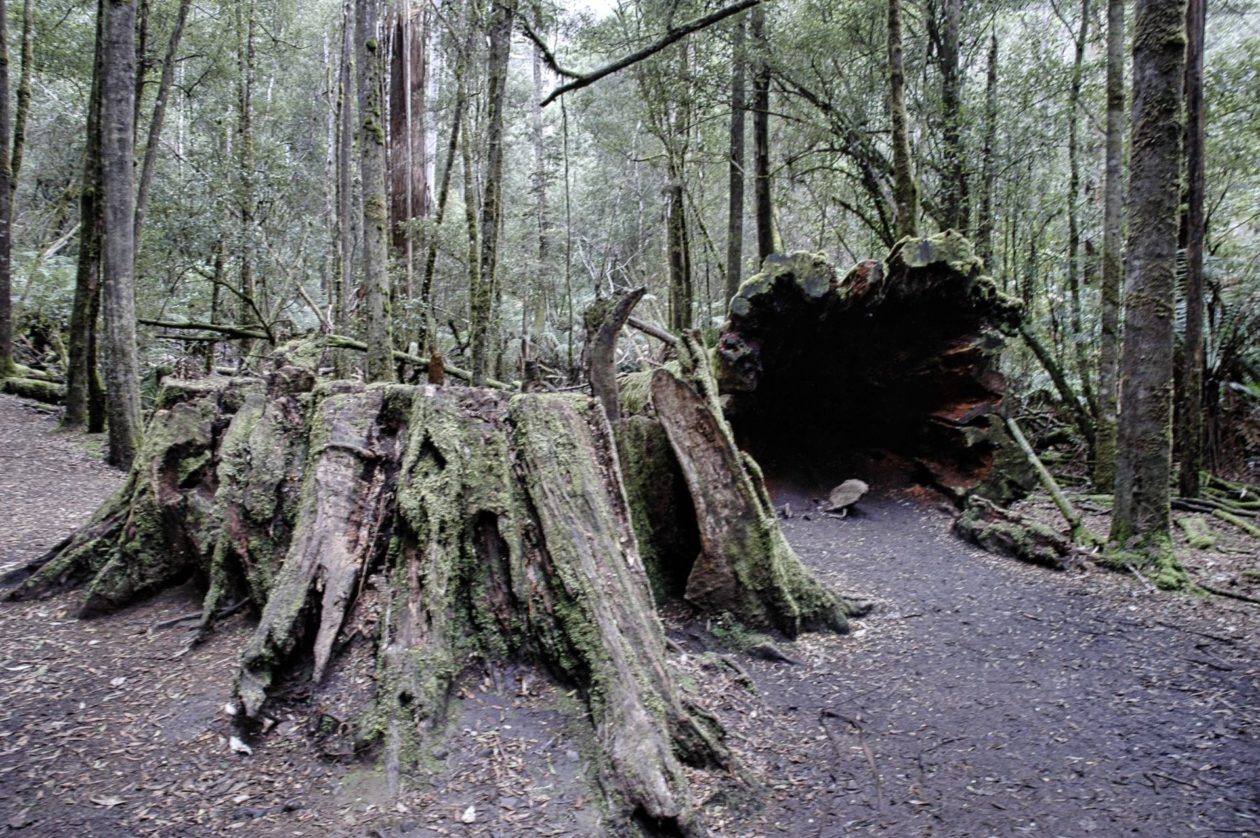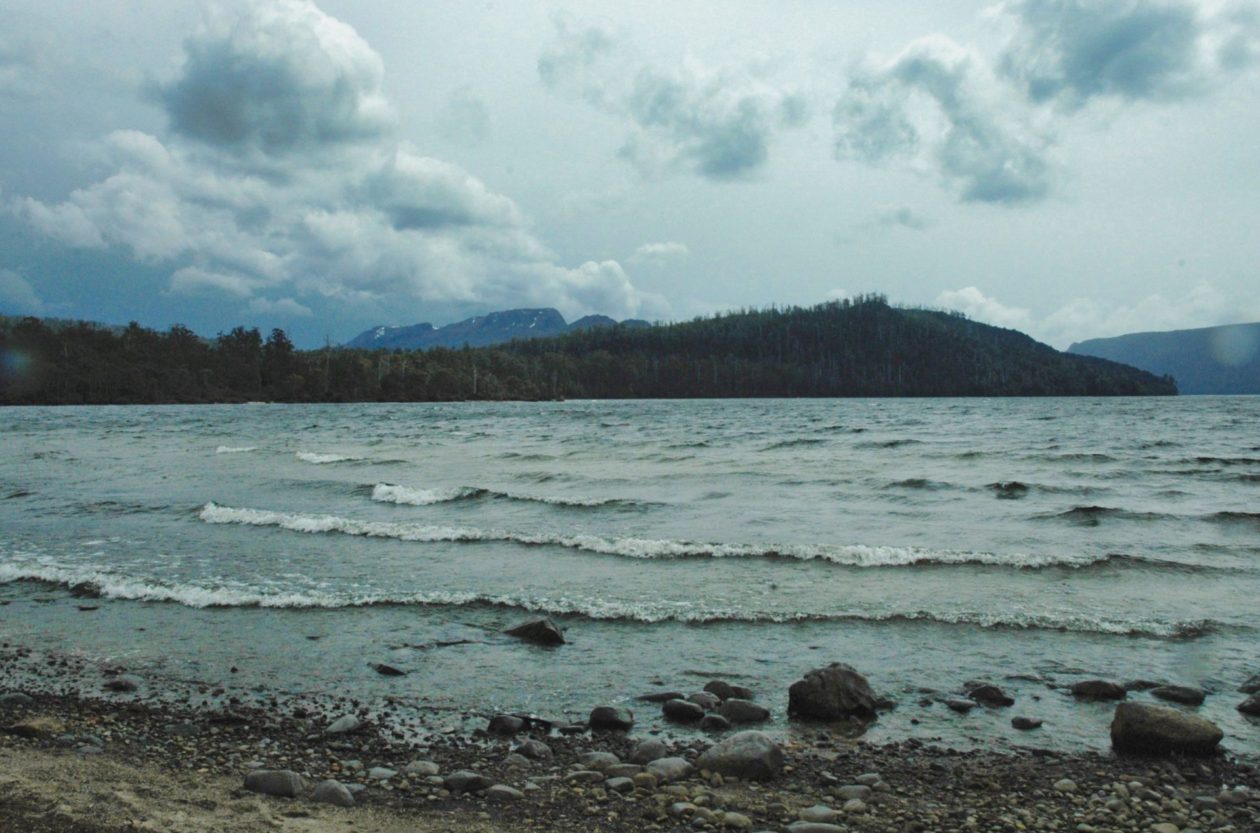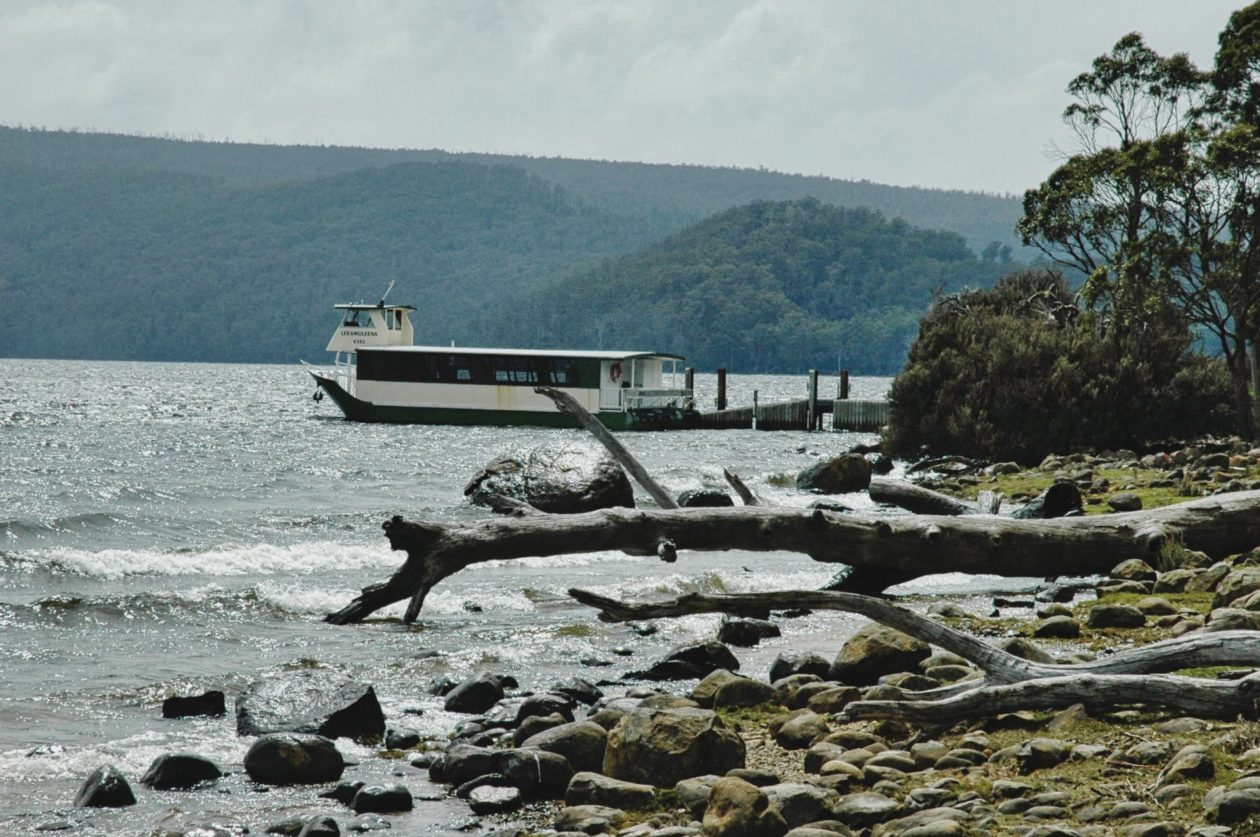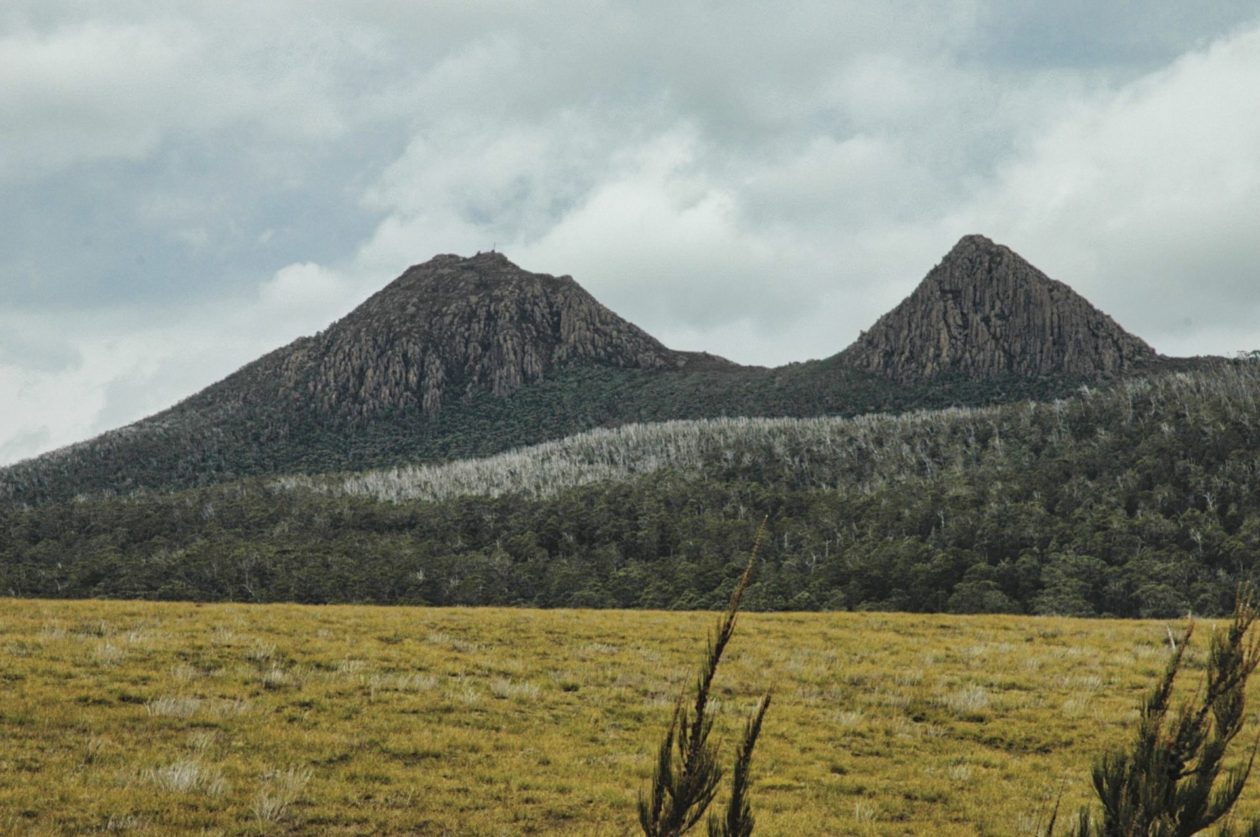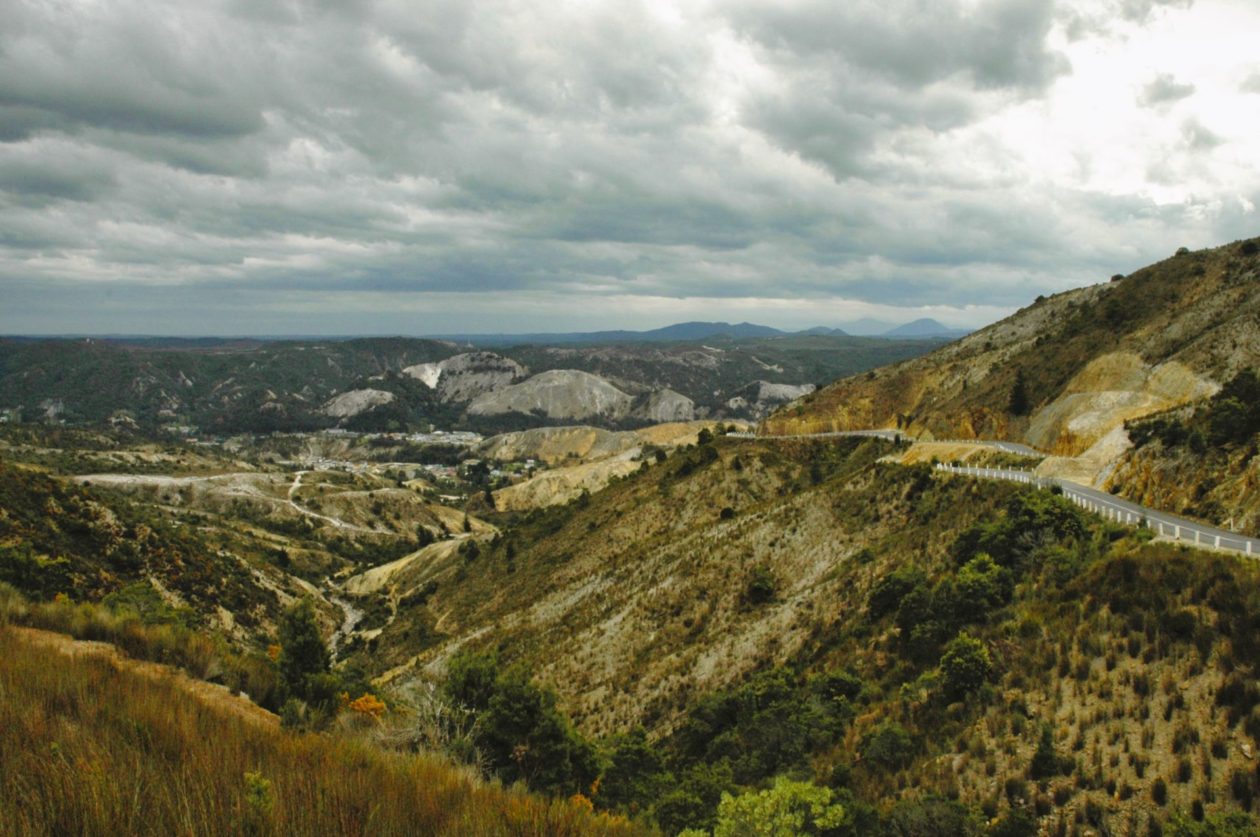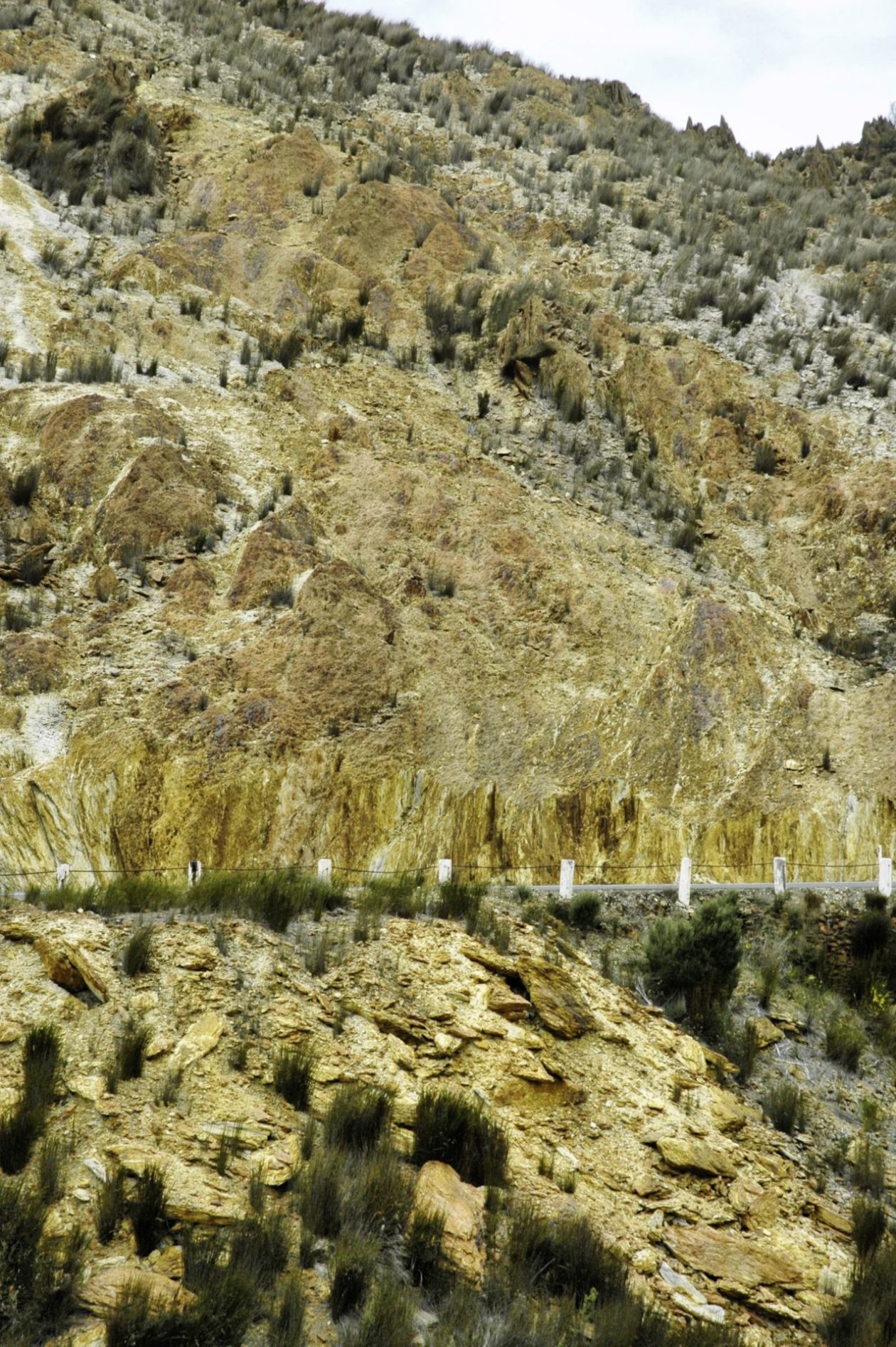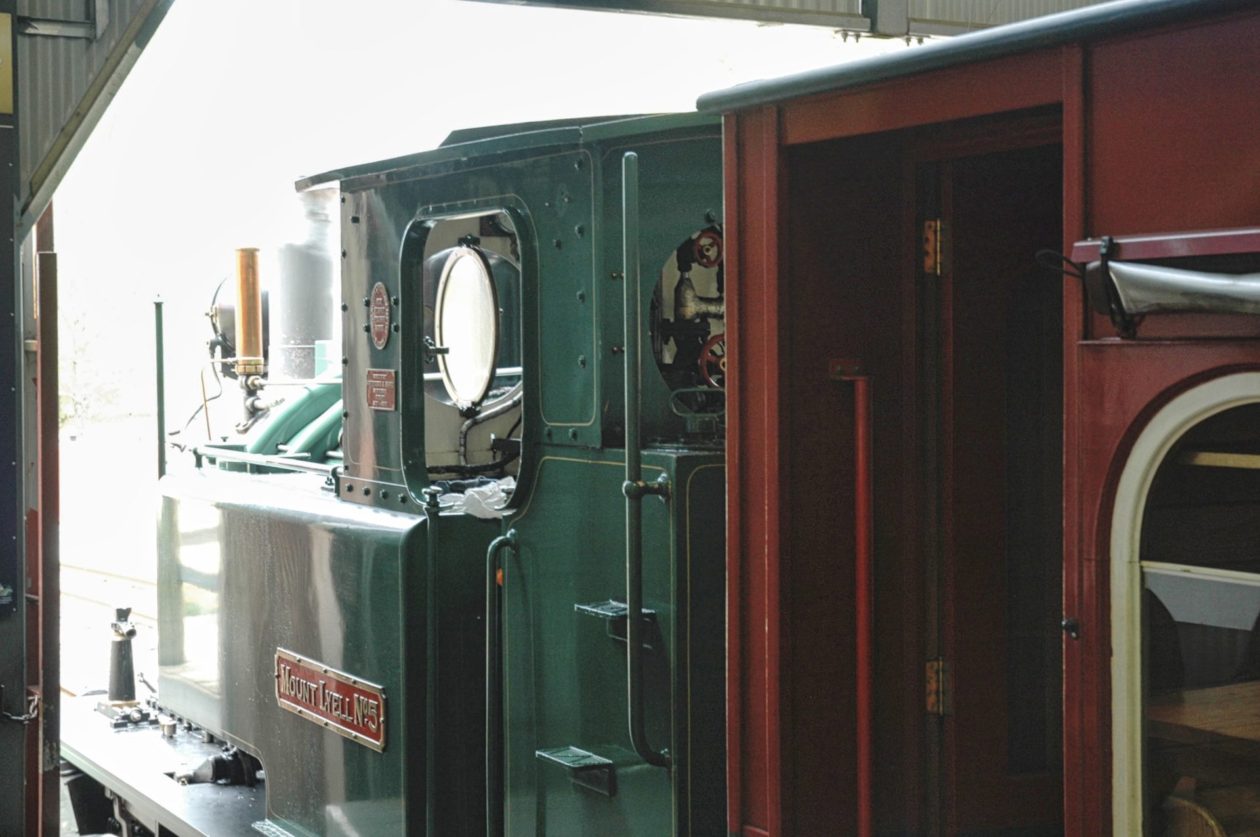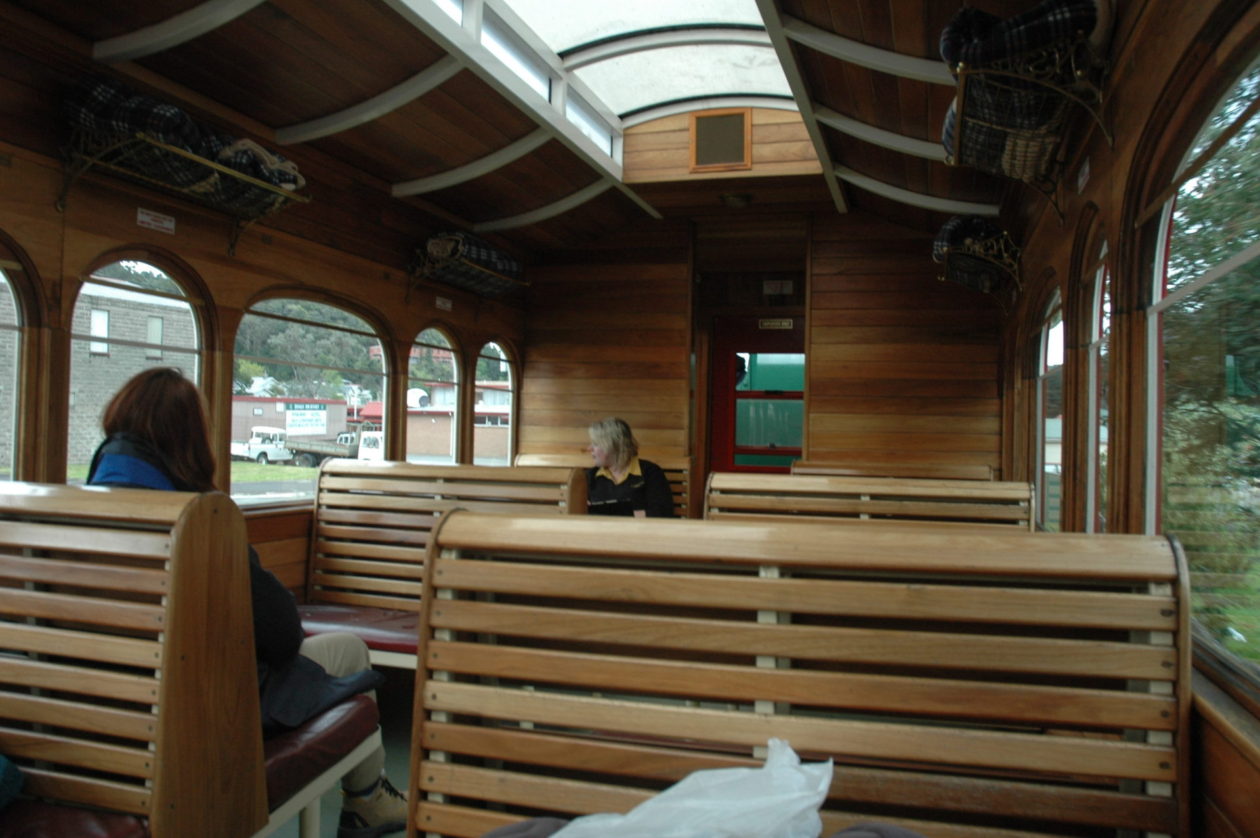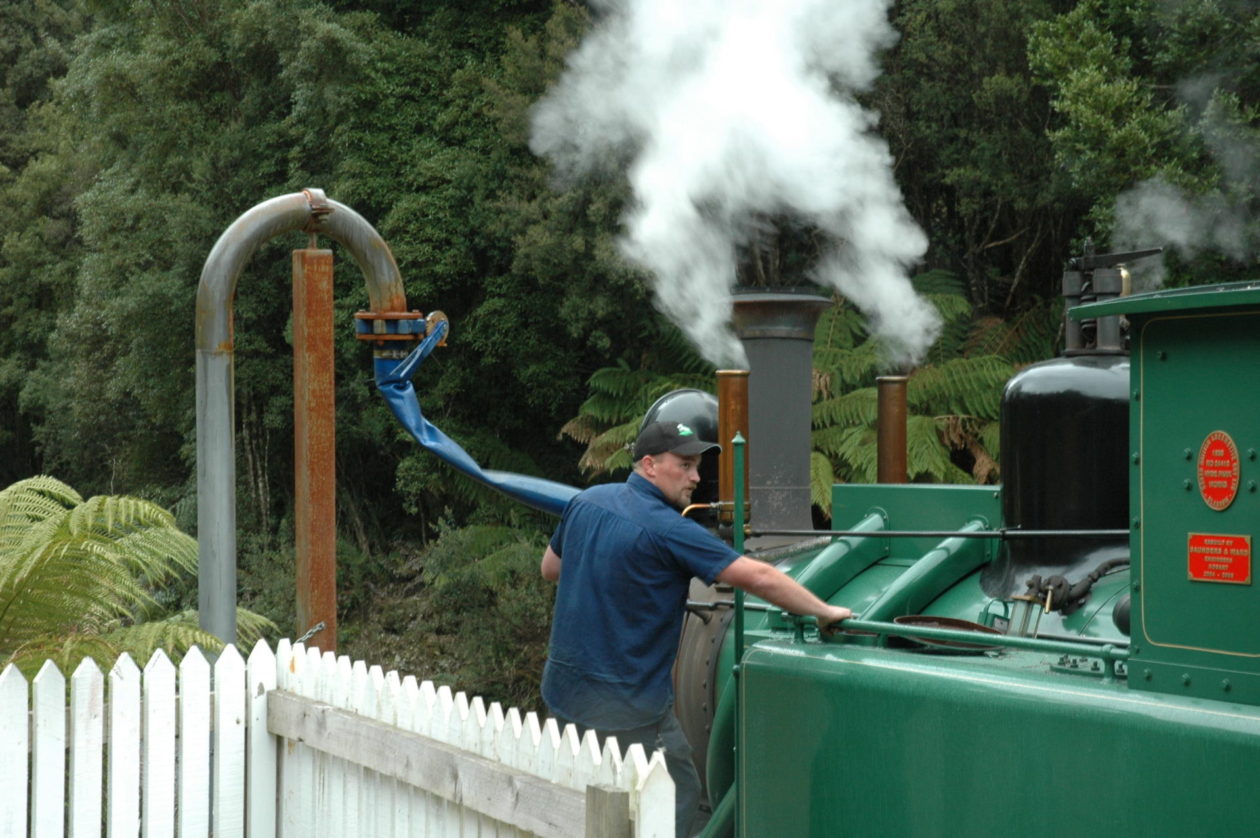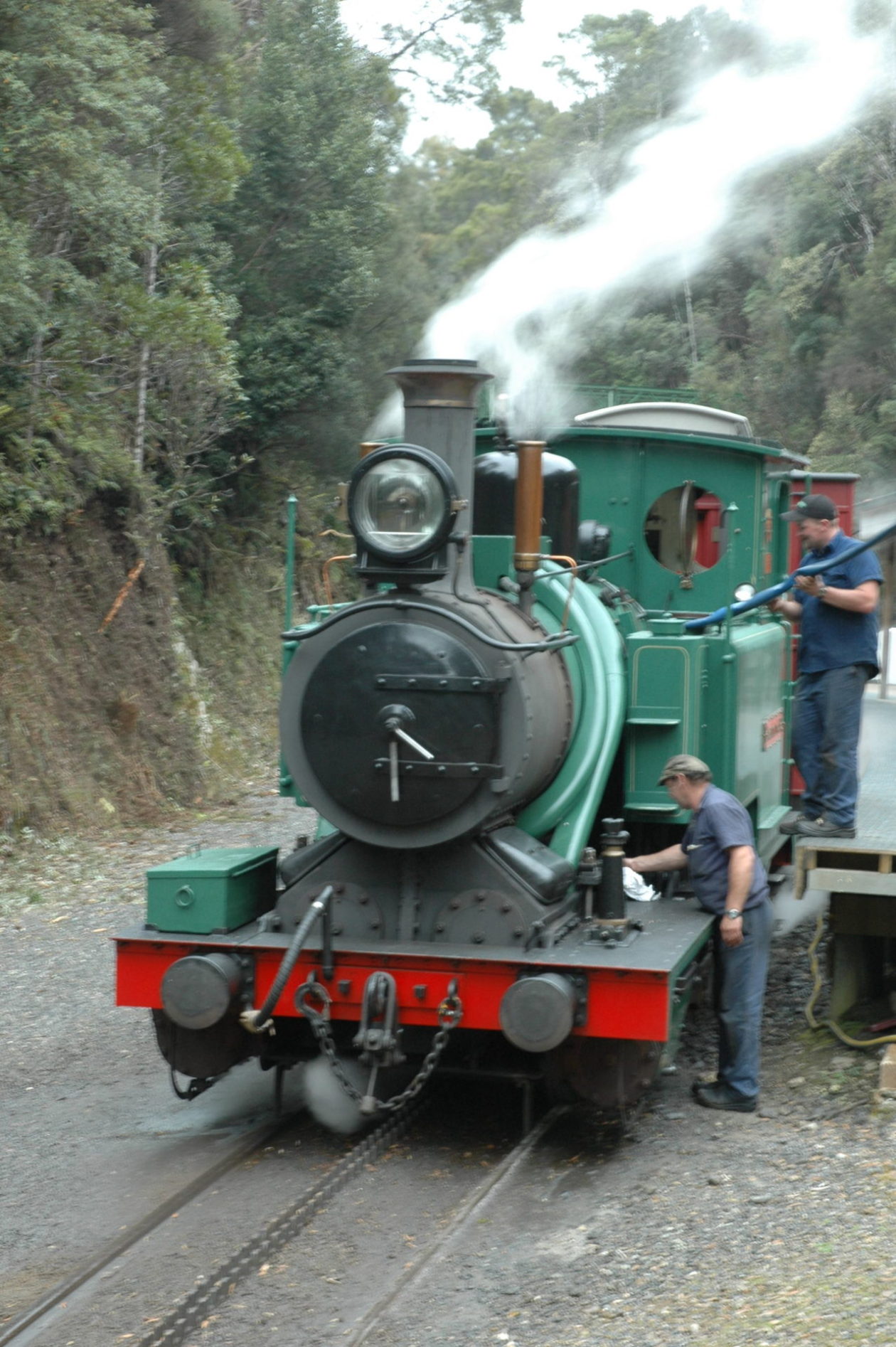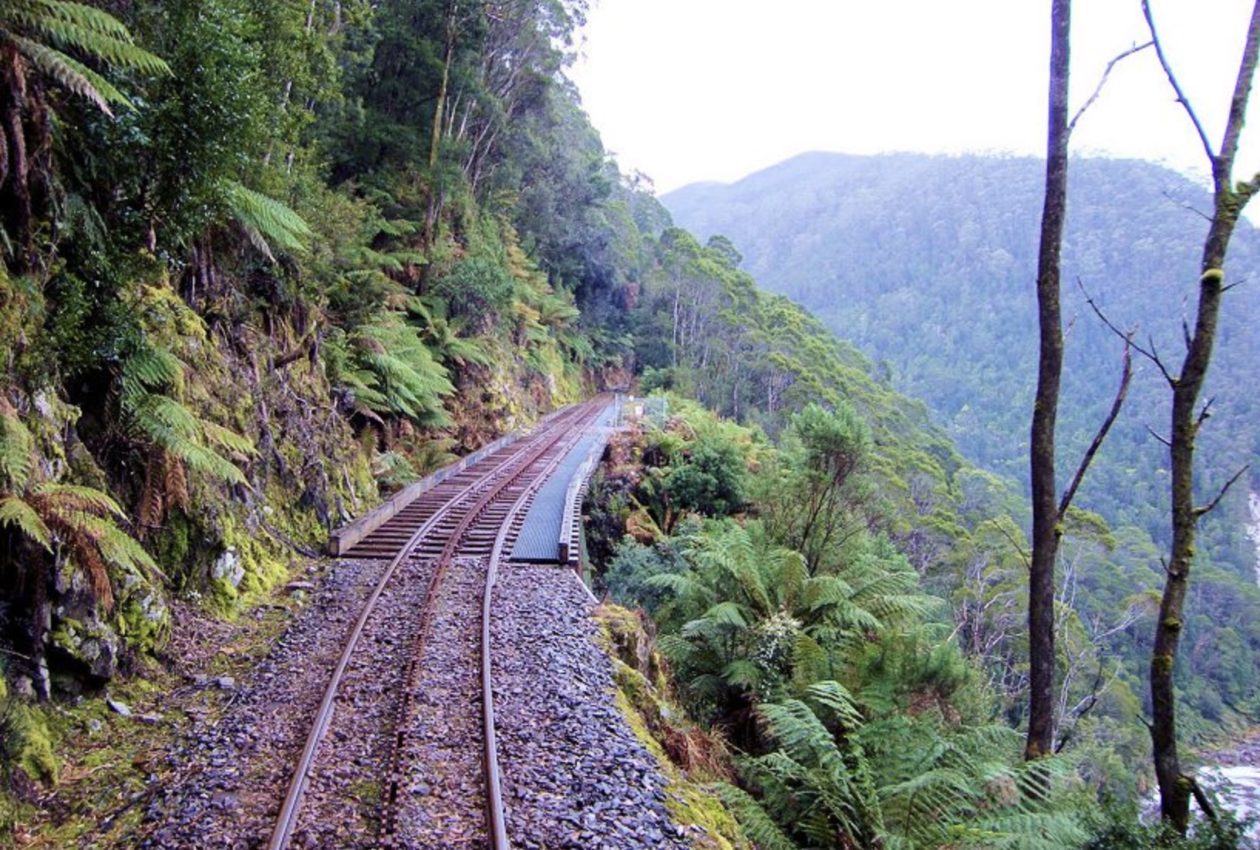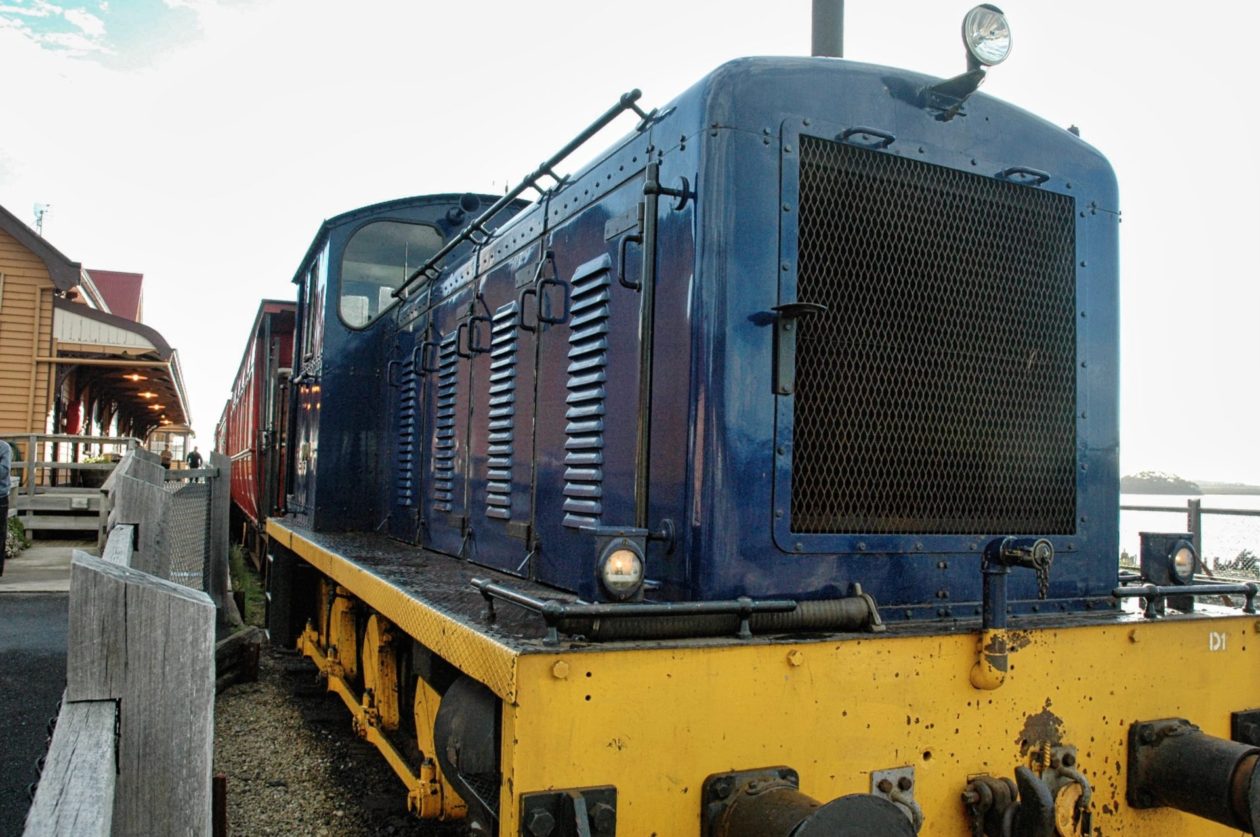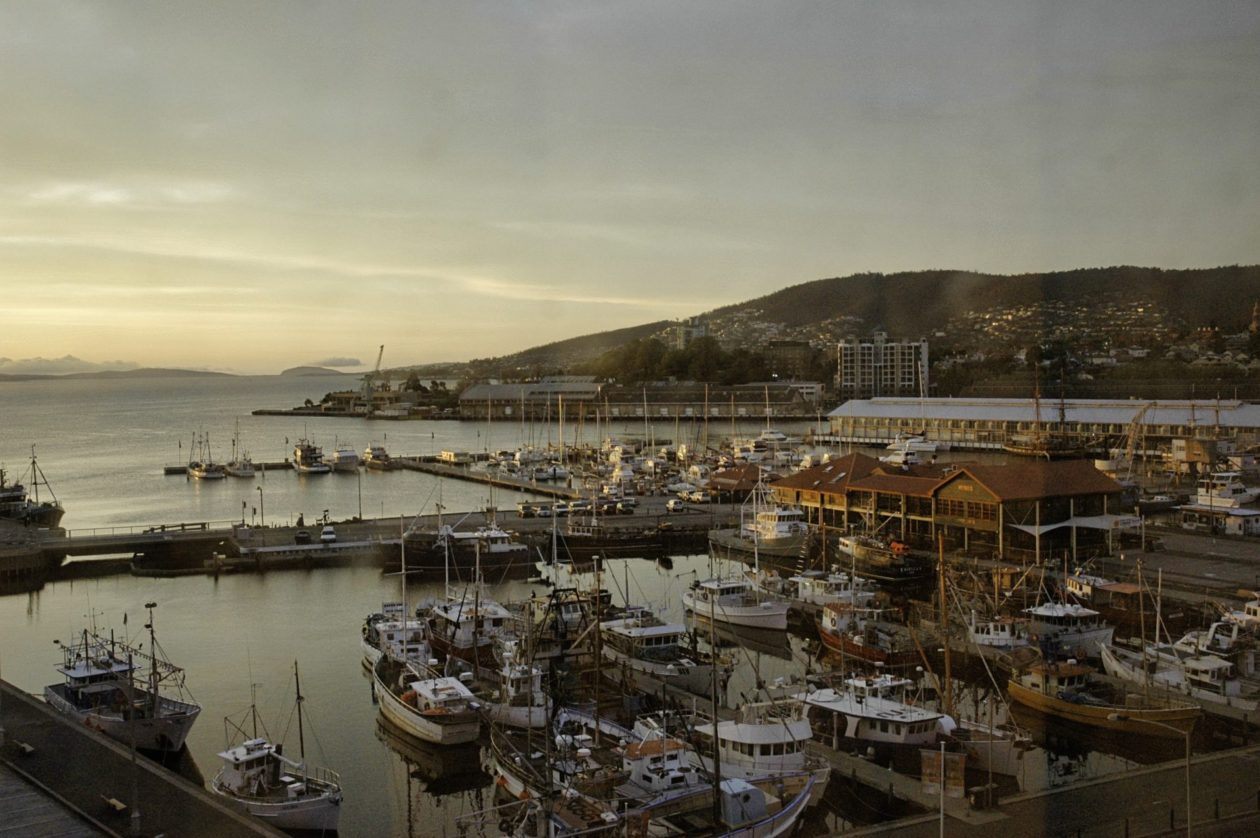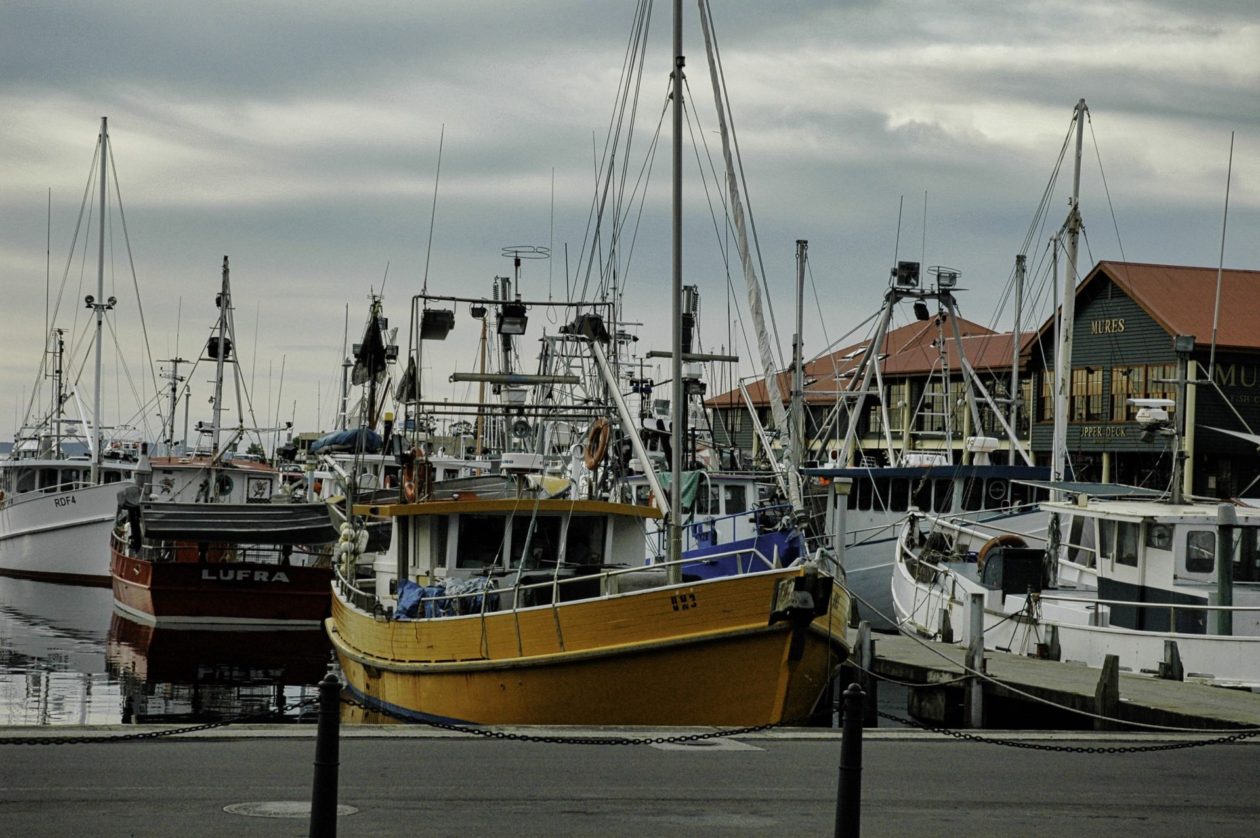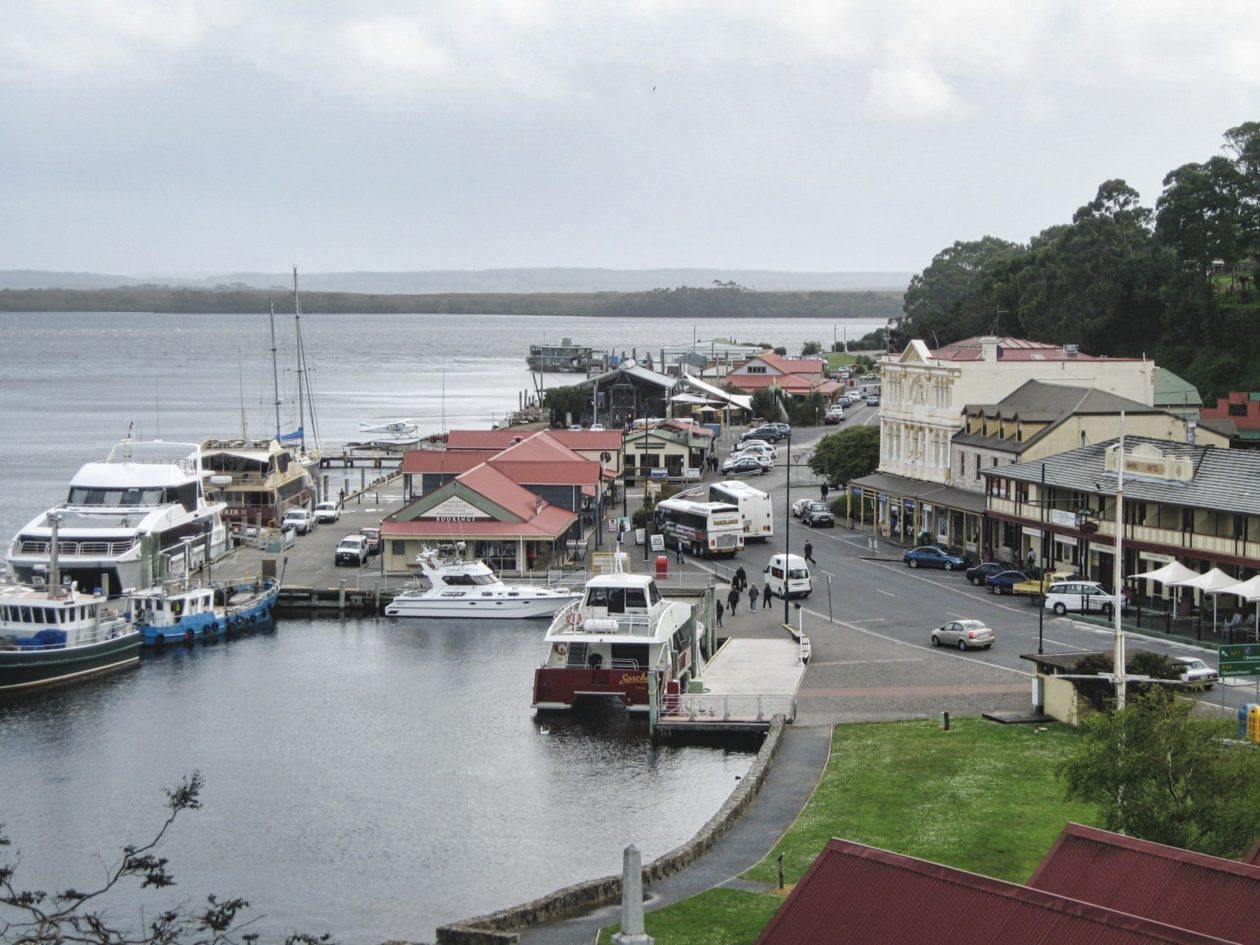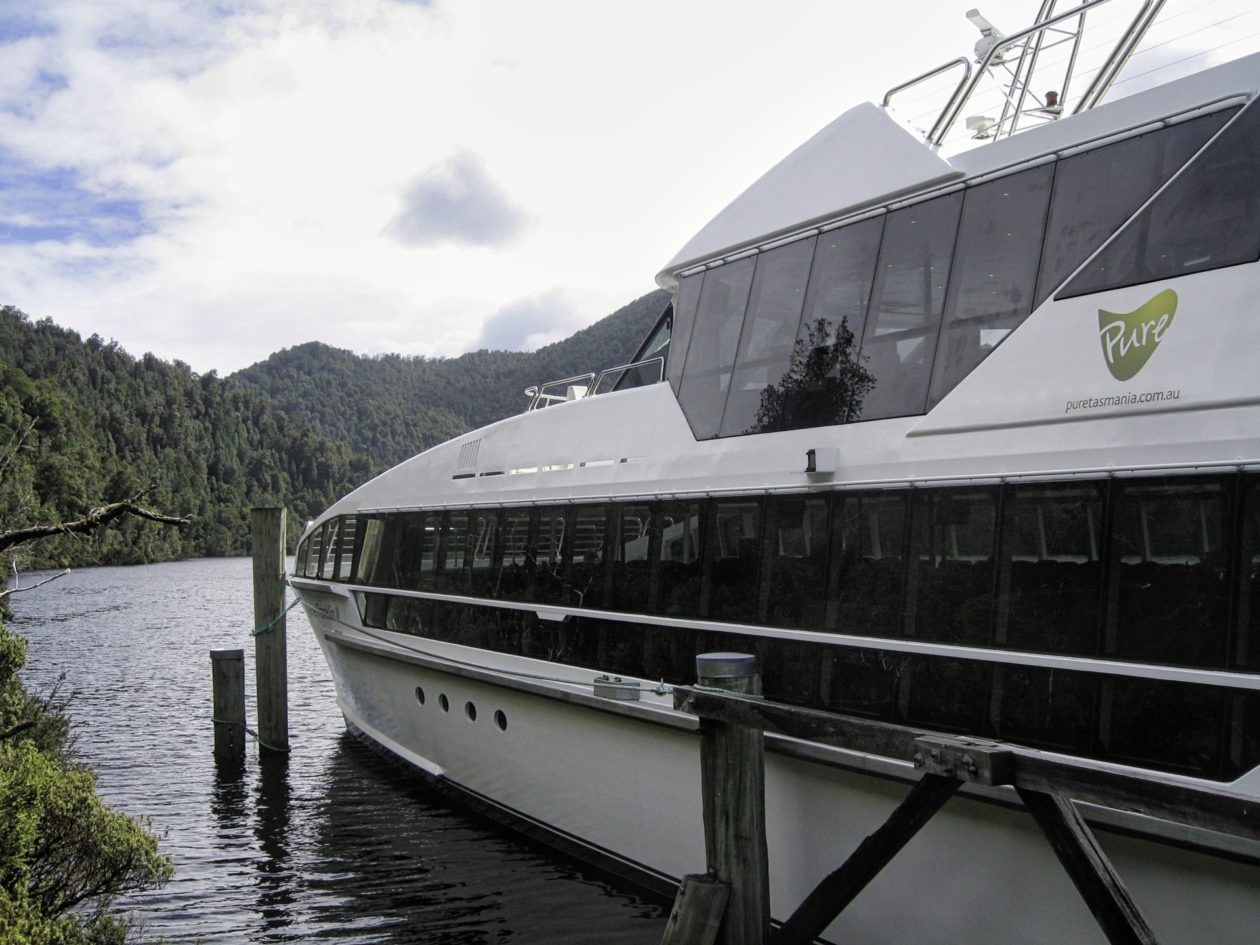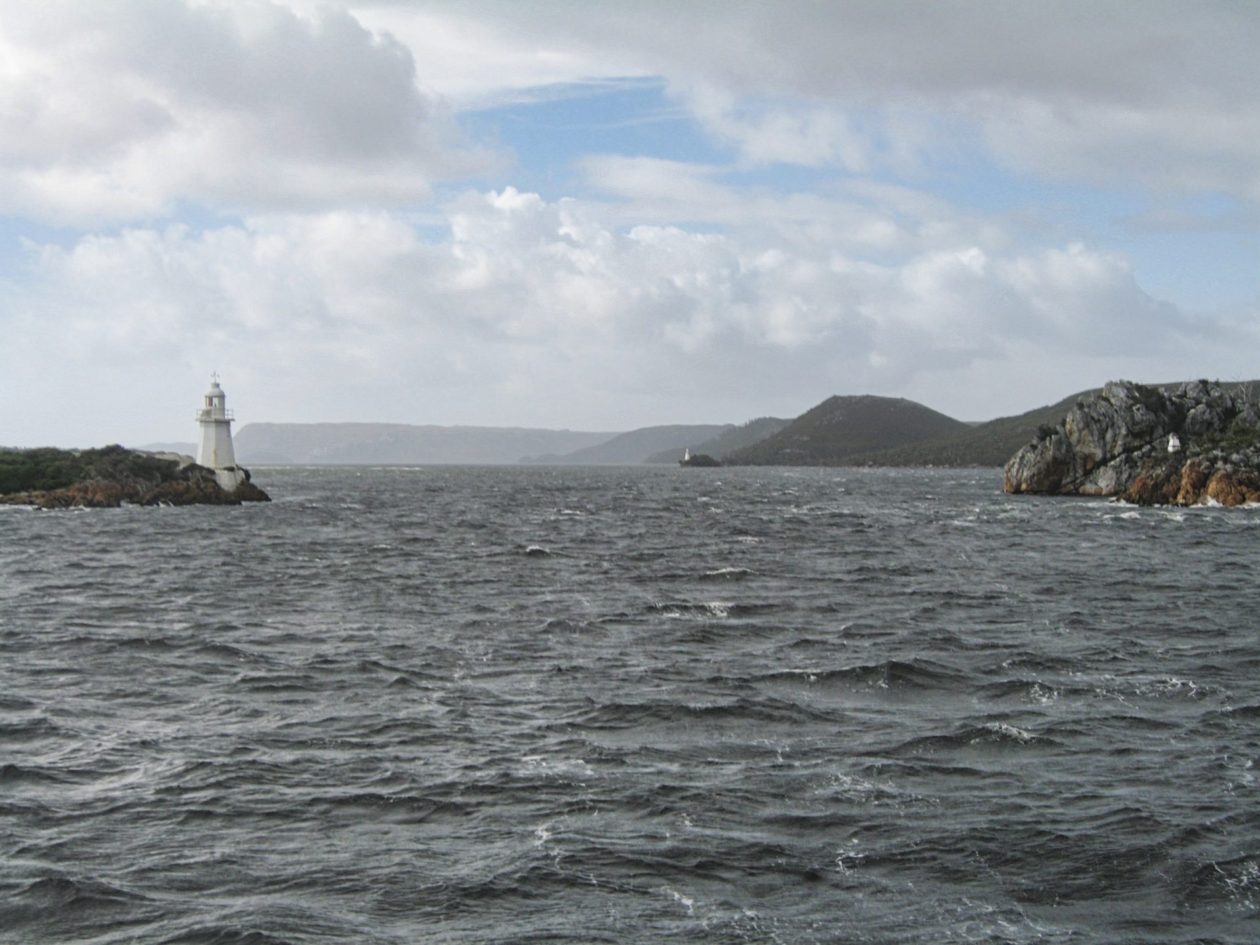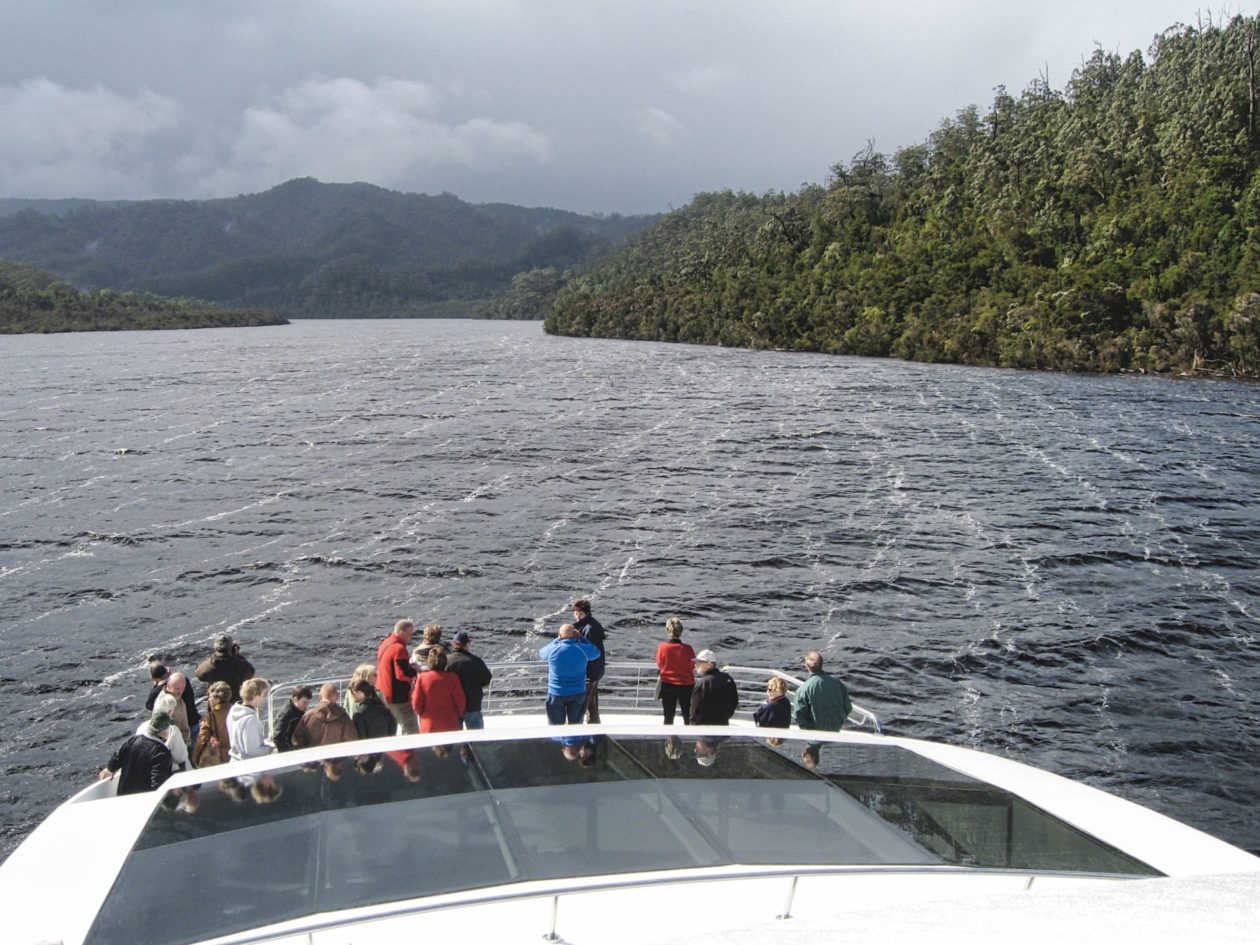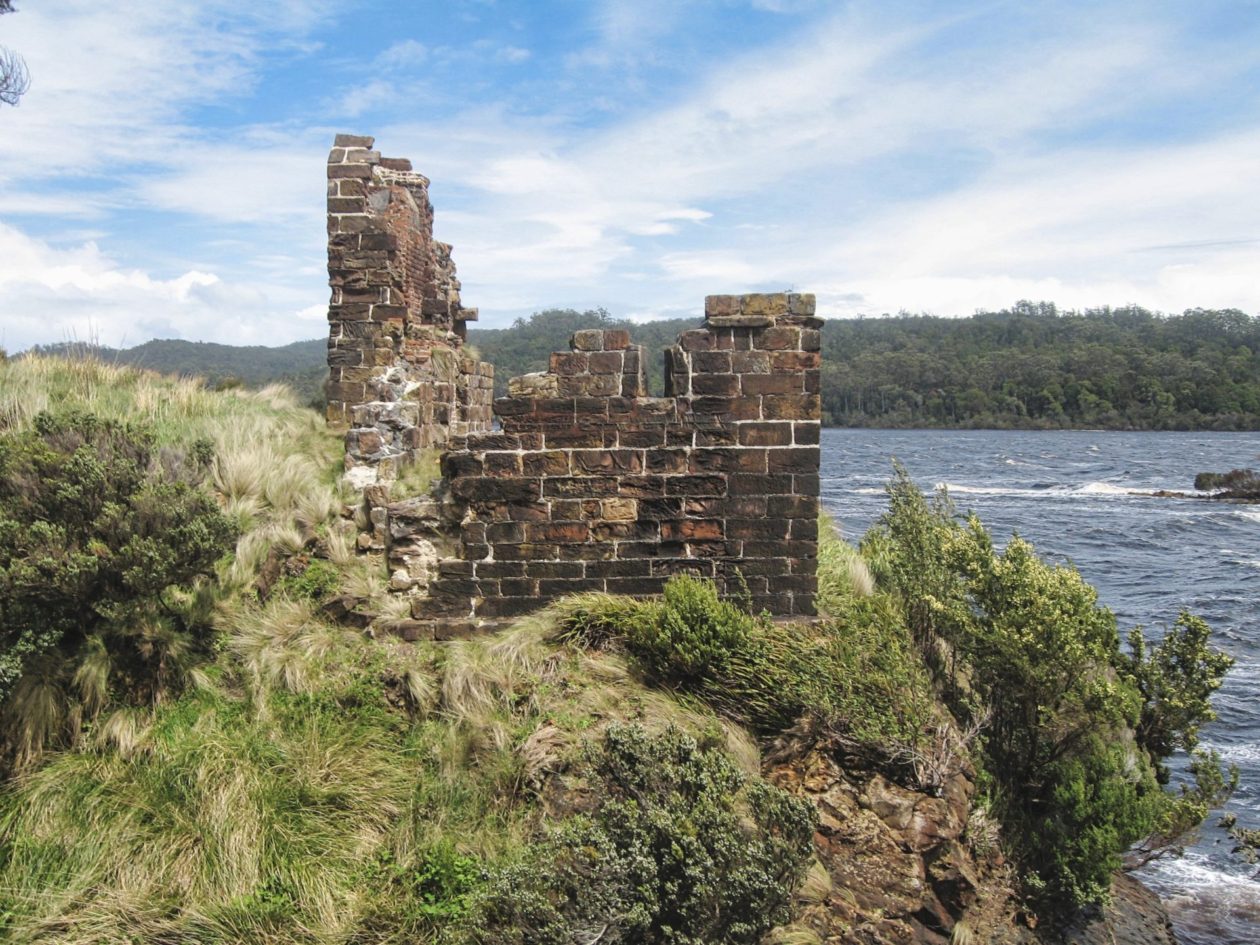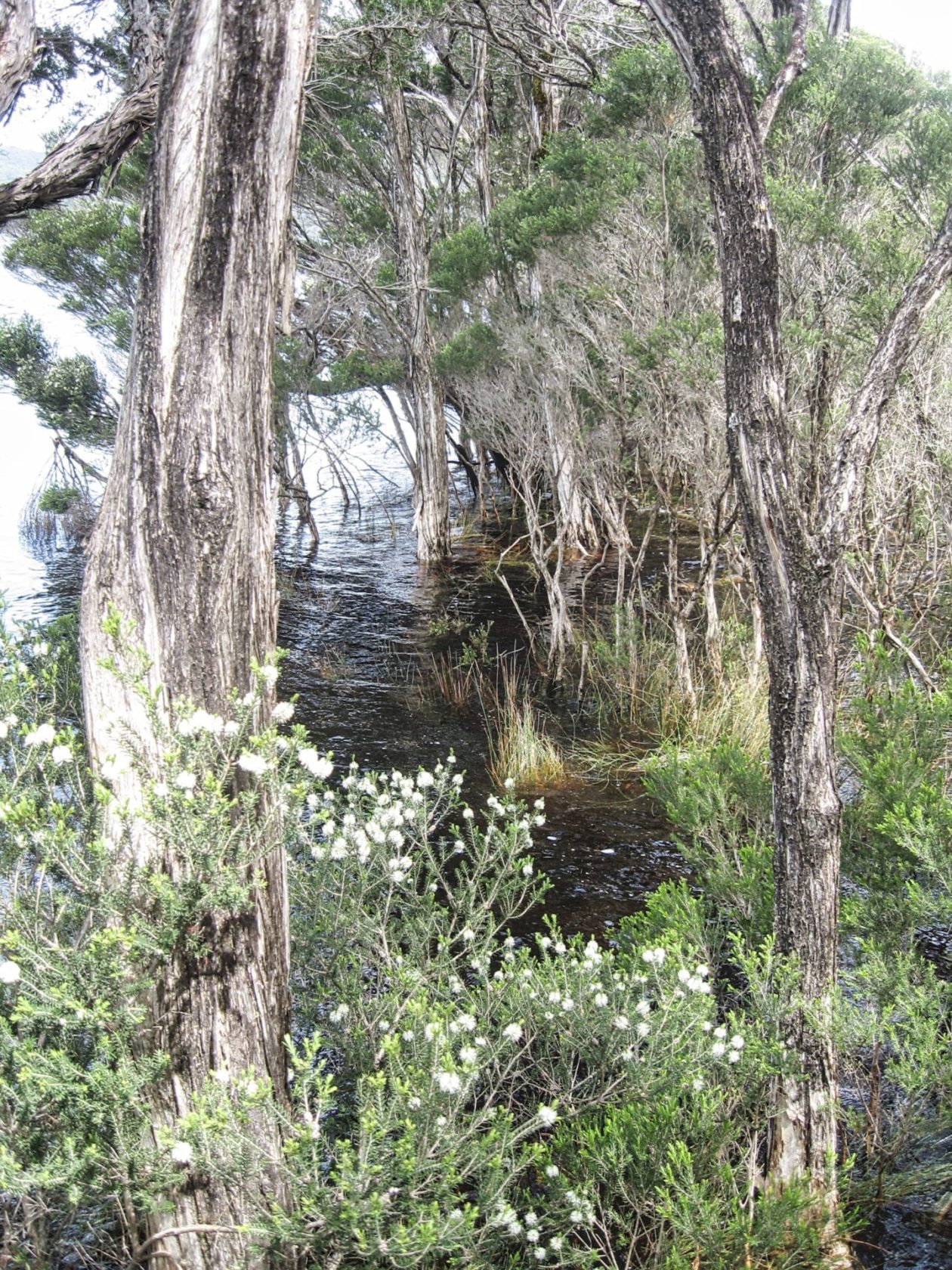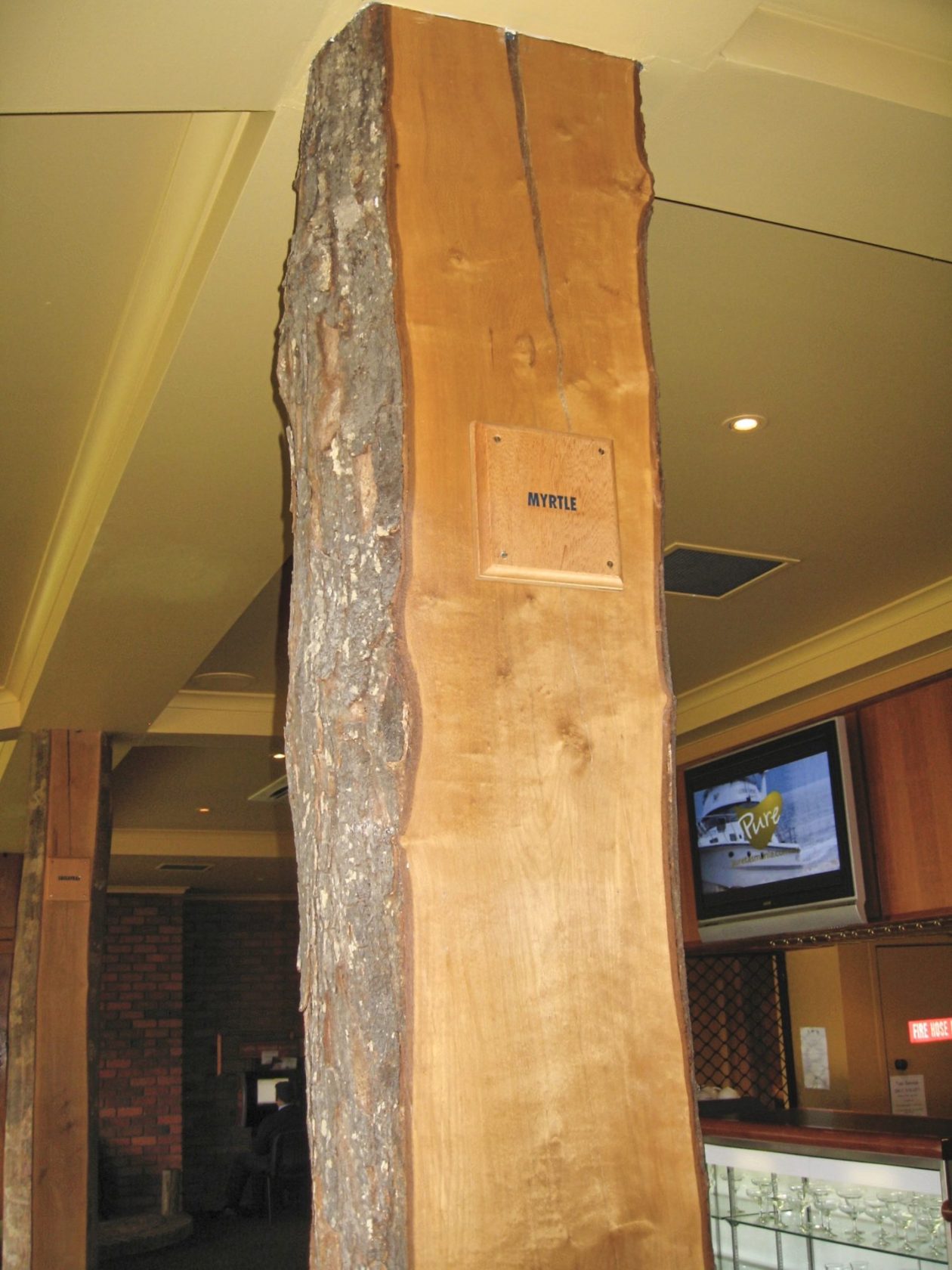- Starting our Tasmanian trip in Launceston
- The Tamar River Valley
- On the road to Freycinet National Park
- Traveling in the steps of convicts — on the road to Port Arthur
- Hobart and the search for lumber!
- The road to Cradle Mountain — Russell Falls, Lake St. Clair, Queenstown, and Strahan
- Cradle Mountain
- The road back to civilization — Woolnorth, Stanley, Table Cape, Sheffield and trip end
Travel in Western Tasmania is very different from the East — it’s rougher, less populated, and full of natural beauty. You had to be an adventurous soul (or a convict) to explore and live out here. After spending much of our tour in civilization, it was good to get out “in the bush.” Our first stop on our trek to the northwest was Russell Falls, which was formed when horizontal beds eroded to harder rock that had vertical faces. It has multiple levels and is beautiful (apparently, these falls have been voted as Tasmania’s finest). In addition to the trails, we walked the trail through a temperate rainforest trail that had many species of wet forest plants and trees including swamp gums, dogwoods, musk, and myrtle.
From there, we drove up to Lake St. Clair, which is part of the Cradle Mountain – Lake St. Clair National Park. The lake is Australia’s deepest, carved out by glaciers over millions of years. The Aboriginal name for the lake is leeawuleena which means “sleeping water.” Well, the day we were there, it was pretty awake with wind and waves. We hiked a number of trails by the lake and in the grasslands, with our first view of Cradle Mountain.
Then we were off to Queenstown, the gateway to the west. Driving into Queenstown, you are surrounded by the scars of its rugged mining past. Here you have stripped hills and mining tailings. Logging and copper mining in the early 1900s left the land in this condition. In fact, because of the. way they had to extract the logs (including roots), it would have been very hard to replant. While beautiful in its own way, Queenstown is a reminder of what harm careless extraction can do to nature. In the late 1800s, a railroad was built from Queenstown to Strahan on the coast to deliver forest and mining products to the coast. Today it is the West Coast Wilderness Railway that cuts through the rainforest to the coast. When traveling on the train with its huge cliffs, bridges, and grade shifts, you can really appreciate what the 400 people who built it accomplished. This is especially true since this area gets nearly 5 feet of rain per year! Most of the train ride is with an old steam locomotives (3 of the original 5 are still in operation), with the last part being a diesel locomotive. The heritage cars themselves are exquisite, many made from some of the local exotic woods that were harvested there.
The end of the train ride brings you to Strahan, a small town and former port of Tasmania’s west coast. It its heyday, Strahan provided two way access to the timber and mining regions in the mountains. It was was a port for the regular shipping of passengers and cargo. Even today, Strahan has a small fishing fleet and there is still some logging of Huon pine (not a true pine, but a nearly white wood with very tight grain). Of course, the other major industry in Strahan is tourism, with the Gordon River tour and visits to Sarah Island, a legendary penal colony that was seen as the harshest of the Australian colonies. We really enjoyed Strahan — it was the right combination of wild and tame and a beautiful place to get away.
It was now time to head to Cradle Mountain.
This entry was posted in Australia, Tasmania, Travel